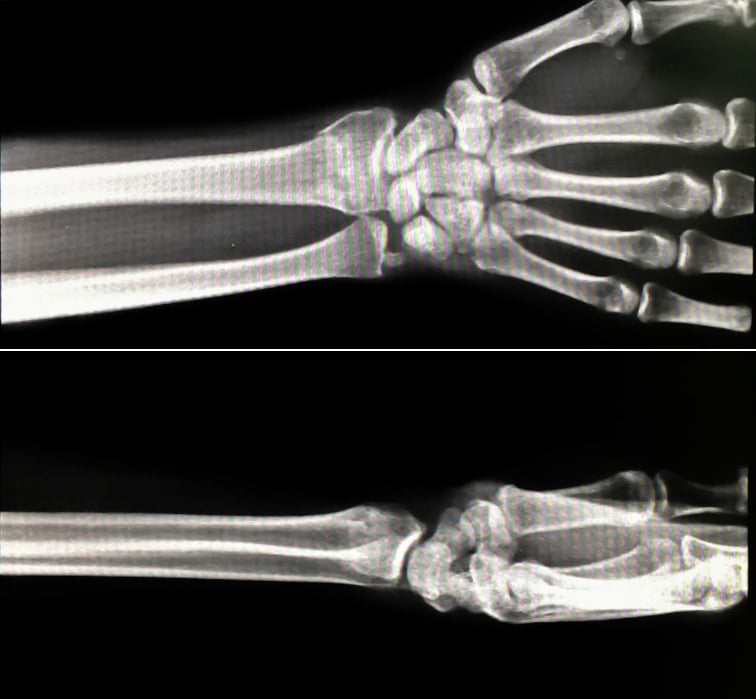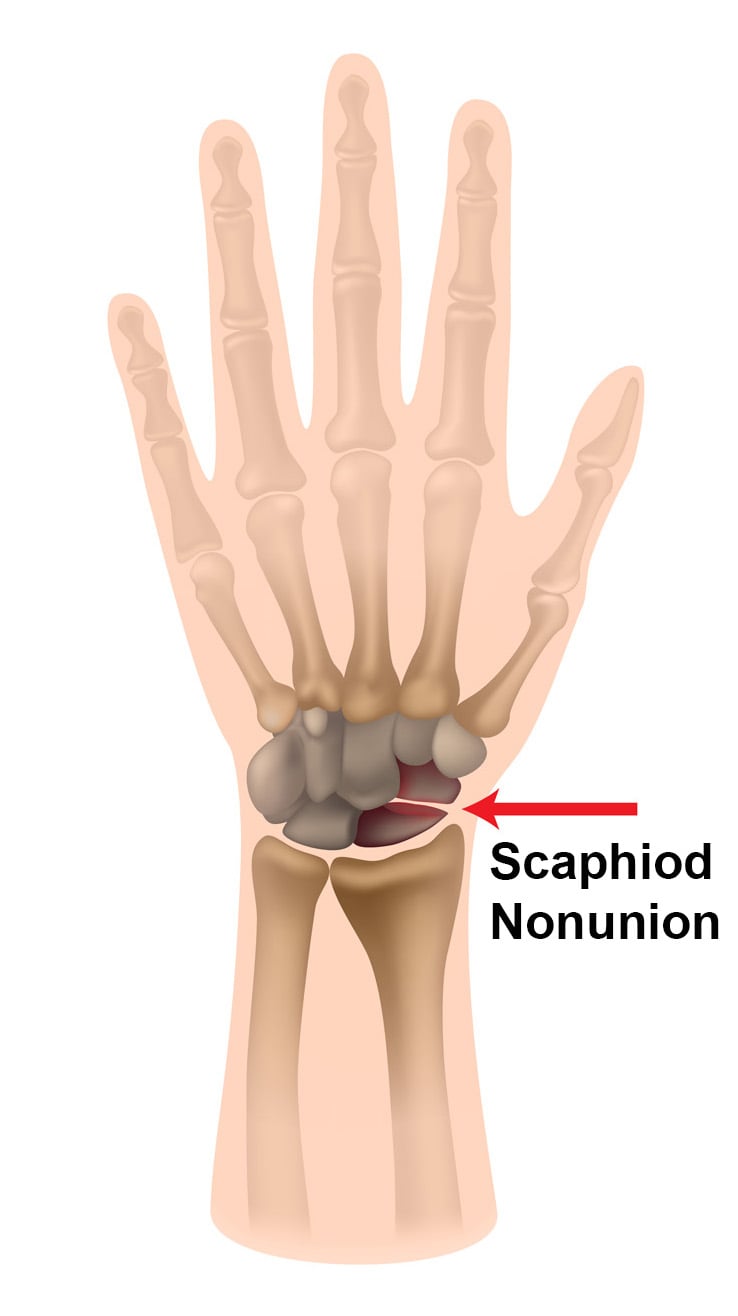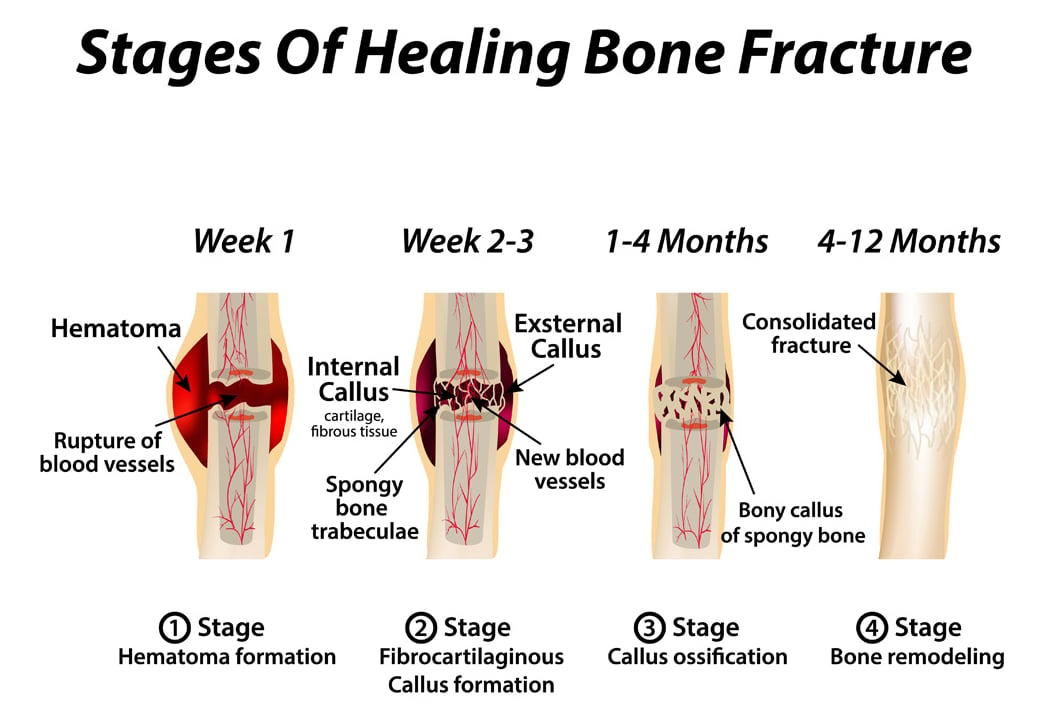Malunion and Nonunion Fractures
A fracture is simply a crack or break in a bone. Fractures are very common in the hand and wrist, usually due to an acute injury. With appropriate treatment, fractures typically heal in an appropriate alignment, and the completed healing is called bony “union”.
Malunion vs nonunion fracture
A malunion occurs when a fracture heals out of normal alignment (crooked or rotated). A nonunion occurs when the fracture does not adequately heal or achieve “union.”
Causes
Causes of malunion (fracture heals out of normal alignment):
- Delay in seeking treatment for the fracture
- Instability of the fracture (not always preventable even with proper treatment)
- Problems with treatment (excessively loose cast, failure of surgical hardware)
- Noncompliance with activity restrictions
 X-rays of a wrist fracture malunion
X-rays of a wrist fracture malunion
Causes of nonunion (fracture does not adequately heal):
- The same causes of malunion can also lead to nonunion
- Additionally, certain fractures are just prone to nonunion (scaphoid, ulnar styloid)

Signs and symptoms
- Persistent pain, swelling, stiffness
- Deformity
Is there a test for malunion and nonunion?
Yes! X-rays can detect bone healing and alignment, but signs of healing can be subtle for some types of fractures. Sometimes we order CT scans if bone healing is questionable. Your symptoms can also be a clue, as fractures with healing problems tend to hurt longer than expected.
Treatment
Treatment for both malunion and nonunion vary widely.
Nonoperative Treatment: Mild malunions (fracture heals slightly crooked) often do not cause any significant pain or functional problems long-term and are usually treated nonoperatively.
Some nonunions (fracture doesn’t heal) also cause minimal, if any, problems, such as a small fracture of the ulnar styloid, which commonly occurs in broken wrists. We may recommend bone stimulation therapy, which uses magnetic fields or ultrasound applied to the fracture site to encourage healing of certain fractures.
Operative Treatment: Significant malunions (fracture heals very crooked causing functional limitations or severe deformity) may require a procedure to surgically “rebreak” the bone and straighten in back into position. Often metal pins, plates, and/or screws are used to hold the bone straight while it heals.
Significant nonunions (fracture doesn’t heal causing persistent pain or arthritis) may require a surgical procedure to remove scar tissue that is blocking the fracture site, and stabilize the fracture pieces with metal pins, plates, and/or screws. Sometimes we place healthy bone or parts of bone called bone graft in the fracture site to encourage healing.

Ready to confirm a diagnosis and fix the problem, or just want to learn more?
Our board-certified orthopedic hand and wrist surgeons, Eric Angermeier, MD and Kyle Kokko, MD, PhD, are here to help! They can often diagnose the problem in one visit, and get you started with a treatment plan. We offer a wide variety of both nonoperative and operative treatment options.
Call today for a clinic or telehealth appointment! 854-429-4263